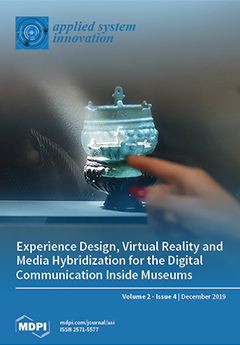The maritime industry, among all other industries, is being forced to gradually reduce its emissions. Legislation is one of the tools applying this pressure, and from 1 January 2020, it focuses on the reduction of sulfur percentage in the heavy fuel oil (HFO)-powered
[...] Read more.
The maritime industry, among all other industries, is being forced to gradually reduce its emissions. Legislation is one of the tools applying this pressure, and from 1 January 2020, it focuses on the reduction of sulfur percentage in the heavy fuel oil (HFO)-powered vessels to 0.5%. In the beginning of this paper, the harmful environmental contribution of the naval sector is presented, along with the current legislation. The maritime industry is in a transitional stage, diverging from fossil fuels through alternative technologies and fuels, aiming to become over the long term a zero-emission industry. However, there are many implemented technologies, mostly of a mechanical nature, that already improve the efficiency of vessels and indirectly reduce their emissions. Such technologies include shaft generators (SGs), scrubbers, etc. The aim is for alternative fuels and technologies such as solar and wind to be implemented, too. Such technologies, when combined with the advantages of digitalization and automation, can further reduce emissions toward zero-emission vessels (ZEVs) through integrated systems. The present paper serves the purpose of a common point of gathering, addressing, and explaining the latest updates, previous achievements, and future targets of the maritime sector. The very nature of the subject—electric propulsion in the maritime sector—makes it very difficult to find sufficient and trustworthy data. There are two main reasons for this problem. The first one is that electric vehicles became commercial at a large scale (electric cars) very recently, and are still in a transitional stage. The second reason is that the maritime industry is very competitive; therefore, state-of-the-art technologies and data that give each company the lead are rarely published, and when they do, it happens very discreetly. In the quantitative part of the paper, where the photovoltaic (PV) and battery system calculations take place, there is no use of a specific model rather than a simplified approach. The purpose of the calculations is to show that with the present technologies, a purely solar-powered commercial vessel (such as RoRo, passenger, etc.) is technically impossible, and that there could be only a small contribution—of around 7%—to the electricity needs of a roll-on/roll-off (RoRo)-passenger ship. The state of the art finds a very short number of vessels that already use battery propulsion, but is expected to increase in the upcoming years. The present paper not only presents an overview of the state-of-the-art achievements in the electric propulsion of vessels, it also considers the exploitation of the continuous growth that the battery market is facing. As stated before, batteries are on the up, and this is due to the emerging need for energy storage in electricity grids that depend increasingly on renewable energy sources (RES). The paper makes a first consideration about the feasibility and possible benefits of implementing grid-like battery systems on-board vessels. In such a scenario, vessels would acquire significantly bigger energy capacity, allowing greater travel distances, a possible contribution of 44% of the vessel’s total power requirements (propulsion included), and a surplus as far as electricity requirements are concerned. There is also the more futuristic long-term scenario where Green Ports would charge vessels purely from RES dedicated to the port’s needs. The last part of the paper contains a qualitative assessment about the possible impacts that a battery-powered maritime industry could have.
Full article





